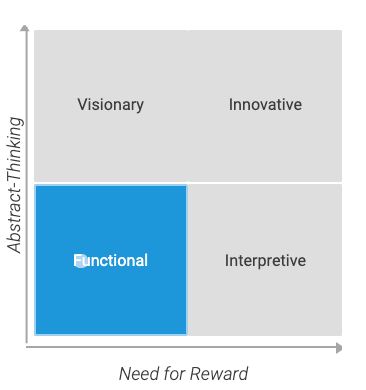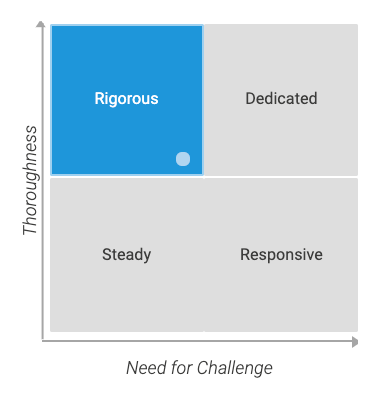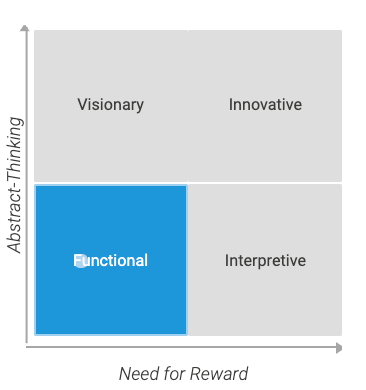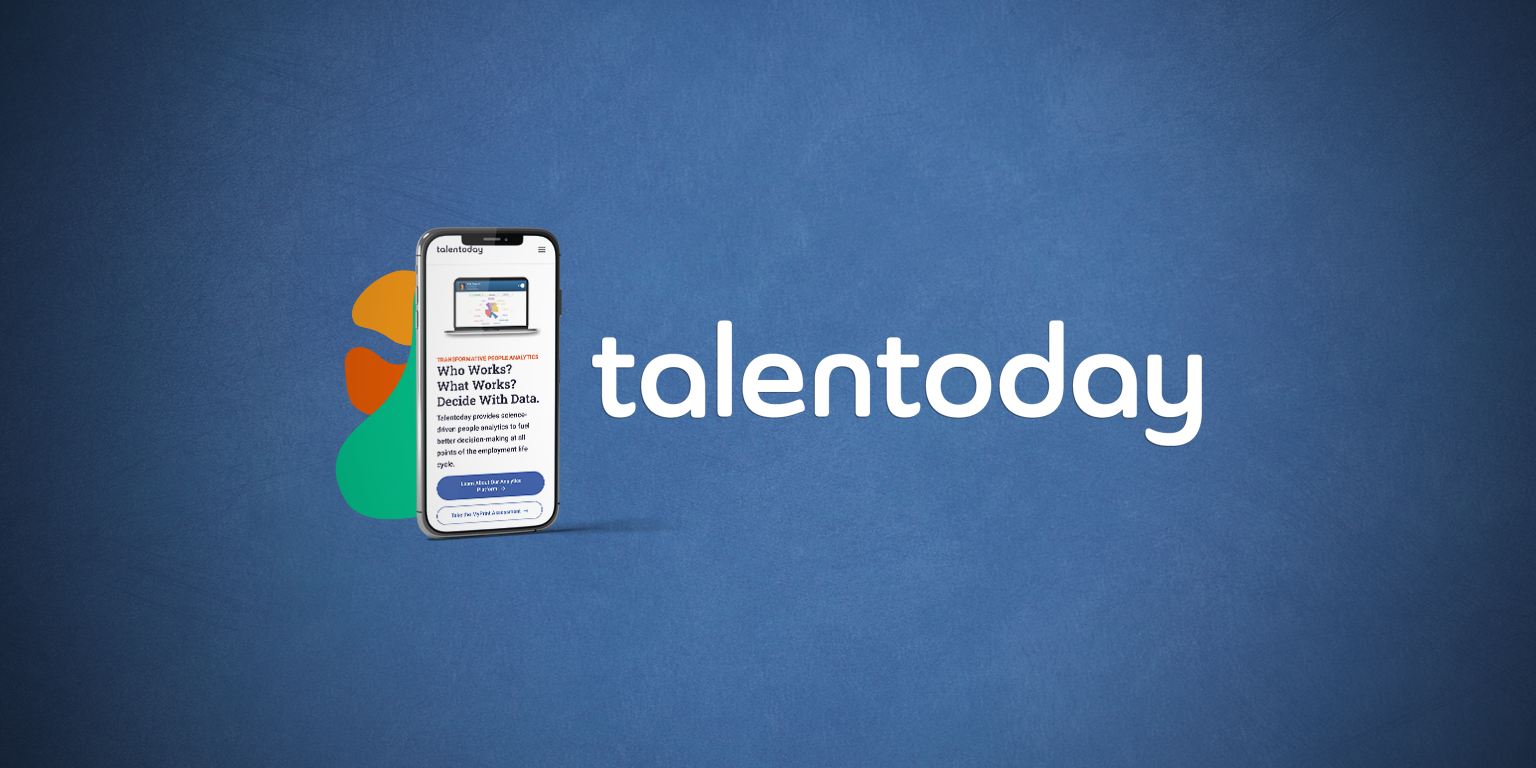Tell a Soft Skills Career Story in Your Next Job Interview
What makes for a great job interview? You know, one of those interviews that makes you say, “I totally nailed it. I know I’ve got the job. It’s time for a happy dance!”
Well, for one, it’s not about reciting your resume word-for-word like some sort of business robot (even if “the robot” is a fantastic choice for a happy dance). Instead, it’s about going beyond the resume to bring the story of your career to life. Then, taking that story a step further to connect your future to the goals of the employer.
The best storytellers don’t just list off events in the order in which they occurred. Instead, they draw the audience in by sharing the unique qualities of each character. In that same way, it’s time to transform your next job interview into an engaging story of what makes you unique as a candidate! To get there, you’ll have to shift the focus from a rehashing of professional milestones to what truly sets you apart — your soft skills!
Chapter 1: Soft Skills vs. Hard Skills
First and foremost, let’s lay out the difference between hard skills and soft skills. Hard skills, also commonly referred to as technical skills, are straightforward requirements for a position that employers can easily check off of a list. Does this applicant have the necessary degree? Did they complete training in this particular area? How many years of experience do they have in the industry?
Hard skills may be a prerequisite for getting your foot in the door, but soft skills are the key to unlocking the full power of your career story. These are the skills that touch on the less tangible elements of the way we work together. Soft skills bring to mind things like communication, leadership and teamwork. In other words, the elements of a great story!
Chapter 2: Identifying Your Soft Skills
If job interviews are all about storytelling, then every job candidate needs to build a narrative with a compelling beginning, middle and end. To start telling your story, think back to previous experiences in your work, education and outside activity history. What made you successful during those experiences? When did you fall short and why? What are you hoping to improve upon as you turn the page to a new chapter in your career?
As a starting point, consider using your resume as a reference. Then, begin writing out these key career moments from memory with soft skills as your focus, going beyond the bullet points to fill in the rich details. Unfortunately, our memories can only tell ourselves and our audiences so much about the way we interact with others in professional settings. In order to go deeper when identifying your soft skills, consider taking an assessment backed by science — like MyPrint®! Supporting anecdotal evidence from your career and experiences with tools built on data-driven people analytics can add credibility to your claims.
Chapter 3: Putting Soft Skills in Action During Questioning
Once you start seeing the job interview process through the lense soft skills, you’ll notice how many of the most common and difficult questions can be easily answered with soft skills in mind.
Here are five of the most common job interview questions, as well as the areas of soft skills employers are look for in your response:
- Can you tell me about a time when you overcame a significant challenge at work?
- What happens when you have multiple deadlines and how do you prioritize?
- Give me an example of when you had to work closely with someone who was difficult to get along with. How did you handle interacting with that person?
- Can you tell me about a time when you had to ask for help?
- What is your preferred management style?
When you answer questions like these, answer with your soft skills! If you are unsure what your strengths are, look at your MyPrint One Pager. What are your top three personality strengths? For example, if you are Empathetic, you might excel working with difficult people because you can put yourself in their shoes and understand why they behave in certain ways. If you are Easy-Going and know that details aren’t your forte, you might be more inclined to reach out to a detail-oriented colleague when you have projects that require precision. The more concrete the example you can share, the better!
Writing an Ending with Confidence
It’s a tale as old as time — the job candidate makes it to the end of the job interview journey only to feel like they missed out on a golden opportunity. One way to avoid this tragic fate is to turn your job interview into a story about soft skills! Prepare for your next meeting with a potential employer by thinking about your career as chapters, each highlighted by the traits that make you unique.
Are you looking to turn your next job interview into the story of your soft skills? Click here to take MyPrint and receive a detailed assessment of your unique personality, motivational and behavioral traits!
Behaviors Uncovered: Creativity, Work and Learning Styles
In the first entry in our Behaviors Uncovered series, we investigated four key dimensions for employers focusing on better understanding group dynamics within their teams: Leadership Style, Communication Style, Conflict Management and Team Contribution. In part two, our attention turns to the behavior patterns that shape the ways individuals expand their knowledge base and work together to invent in the workplace: Creativity, Work and Learning Styles.
As a recap, behaviors represent the ranges of observable actions made by individuals in conjunction with their environment. The Talentoday MyPrint® questionnaire provides 11 behavioral dimensions displayed as score matrices resulting from the combination of personality and motivations dimensions of the assessment. Therefore, our behavioral styles are predicted based on the scores (high or low) that an individual has obtained on these two dimensions crossed together. In short, these analytical grids give insights for understanding why an individual tends to foster a particular pattern of actions and how they maintain it.
Creativity Style
Time and time again, creativity is cited as the skill most sought after by employers. After the ways we work were upended due to COVID-19, is it any wonder that companies are looking for ways to boost their knack for finding novel solutions to problems?
How, exactly, you define creativity is key when uncovering the science behind the behaviors in this area. Creativity Style can be described as the set of processes that an individual takes to produce something that is new and somehow valuable, whether it is intangible or concrete.
There are four styles of creativity, derived from the “Abstract Thinking” dimension of personality and the “Need for Reward” dimension of motivation:
- Visionary (Imaginative, Need to Contribute to Society): Individuals who have a Visionary creativity style are imaginative and aim for groundbreaking changes that will contribute to the improvement and betterment of others.
- Innovative (Imaginative, Need for Tangible Benefits): Individuals who have an Innovate creativity style like to think outside of the box, and aim to develop new and profitable processes or technologies.
- Functional (Practical, Need to Contribute to Society): Individuals who have a Functional creativity style are realistic, and their creative actions might take place in everyday activities, such as by using existing tools or methods in new and original ways.
- Interpretive (Practical, Need for Tangible Benefits): Individuals who have an Interpretive creativity style are typically looking for quick solutions, and usually come up with more advanced and profitable interpretations of existing techniques or devices.
Work Style
Whether a job requires multiple simple tasks or challenging projects will strongly influence the type of person that you want to work in certain roles. By taking the time to learn about what work style a person uses, you can help to assign roles on certain projects or keep it in mind when hiring for different roles. Work Style refers to the way in which an individual tackles their tasks and projects, as well as the pace at which they complete them.
There are four styles of communication, derived from the combination of the “Thoroughness” dimension of personality and the “Need for Challenge” dimension of motivation:
- Rigorous (Precise, Need for Attainable Goals): Individuals who have a Rigorous work style are thorough and task-oriented, and ensure high quality and error free work.
- Dedicated (Precise, Need for Personal Achievement): Individuals who have a Dedicated work style like to work on challenging projects and provide high quality work.
- Steady (Easy-Going, Need for Attainable Goals): Individuals who have a Steady work style value realistic goals and deadlines, and favor consistent productivity by focusing on bottom-line results.
- Responsive (Easy-Going, Need for Personal Achievement): Individuals who have a Responsive work style like challenging goals, and favor multi-tasking in order to do a higher quantity of work in a shorter amount of time.
Learning Style
It’s clear that uncovering the science behind behaviors in areas like learning style will play an integral role in the future of work. In fact, recent reporting indicates that companies are transitioning from hiring based on existing education to focus on skills-based hiring. For this expansion of upskilling efforts to work, employers must first learn how to tap into an individual’s preferred learning style
For our purposes, Learning Style can be summarized as the set of processes that an individual uses to acquire or develop skills or knowledge..
There are four styles of communication, derived from the combination of the “Structure” dimension of personality and the “Need for Recognition” dimension of motivation:
- Studious (Orderly, Need for Intrinsic Enjoyment): Individuals who are Studious learners like to learn things that they find interesting, and prefer learning through methods that allow time to reflect and go at their own pace, such as reading books or articles.
- Sequential (Orderly, Need for External Acknowledgment): Individuals who are Sequential learners are structured and learn best in a lesson format, with clear goals and positive feedback validating their progress.
- Conceptual (Spontaneous, Need for Intrinsic Enjoyment): Individuals who are Conceptual learners like to learn things for fun and do not need structure, but rather will feel like they’ve mastered a topic once they know its full context.
- Experimental (Spontaneous, Need for External Acknowledgment): Individuals who are Experimental learners tend to be intuitive and learn best through group interactions, where they seek positive feedback while testing their new knowledge or skills on others.
As the workplace evolves, employers are putting higher premiums on hiring individuals with the capacity to grow and find new ways to solve problems in their given roles. Understanding the behaviors behind creativity, work and learning styles is an important first step towards building an adaptable team ready to take on the future of work.
In the final entry of our three-part Behaviors Uncovered series, we investigate four areas of behavior that get to the heart of the ways individuals calculate their responses to high pressure situations — Rule Consciousness, Decision Making, Risk Orientation and Change Reaction.
Interested in uncovering more about how behavior profiles can help you understand how someone will act in a professional setting? Discover the science behind MyPrint by clicking here.
New Tailored Group DNA Feature Adds Personalization to Soft Skills Analysis
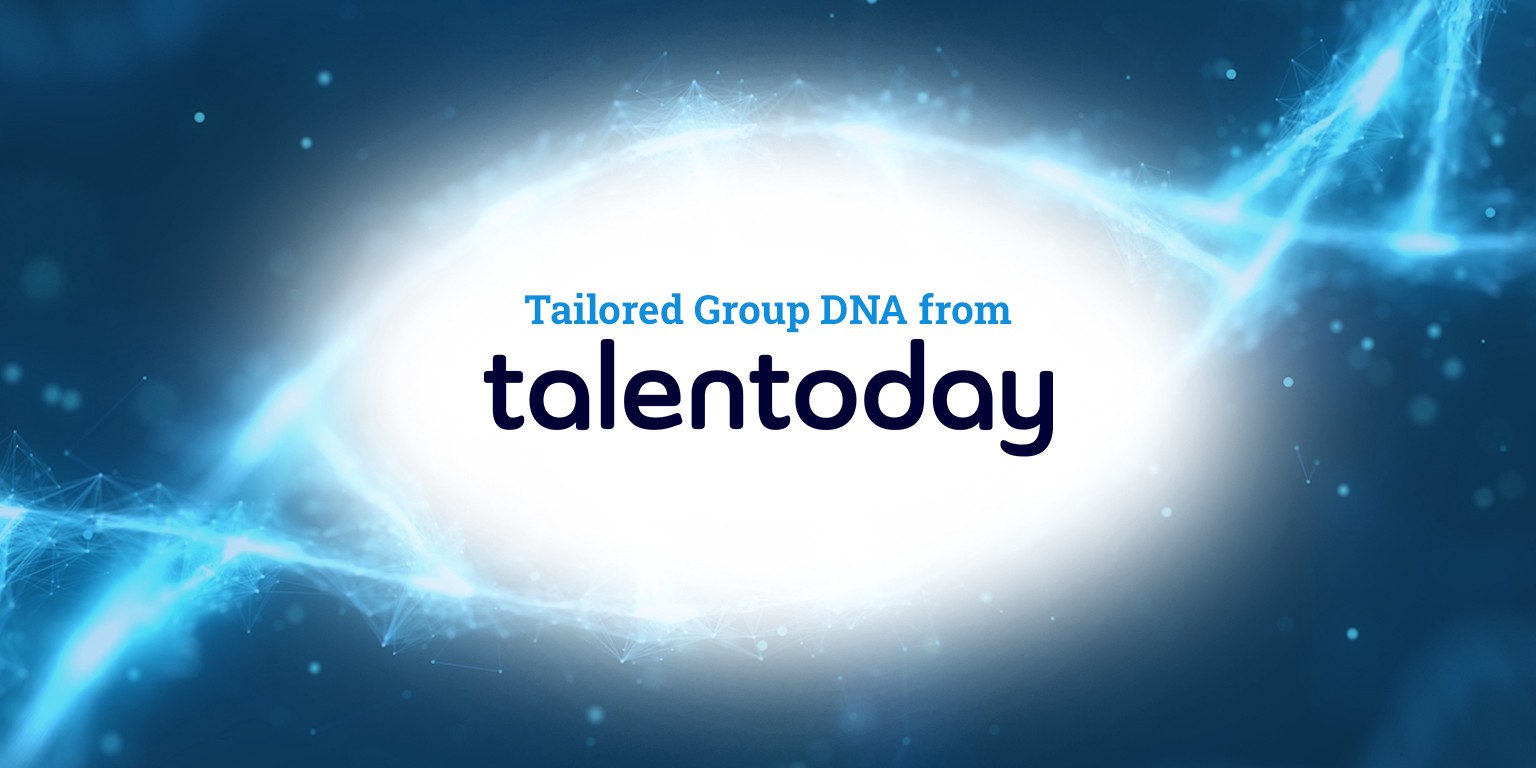
Talentoday is excited to announce the arrival of the newest feature of Talentoday Manager — Tailored Group DNA! In the last year, our team introduced Talentoday Managers to Group DNA. The idea was simple: Users needed to be able to make smarter HR decisions and maximize synergies within teams by leveraging MyPrint® soft skills data at scale.
Group DNA achieved this with two core purposes in mind: team profiling and talent matching.
- Team Profiling: Group DNA allows users to uncover the soft skills and traits that shape any distinct work group of three or more people. The result is a visual representation of what makes a group effective, and where there are skills gaps to fill.
- Talent Matching: Group DNA improves talent matching by determining the synergies within a job function by taking a sampling of members and allowing Managers to identify the predominant skills that contribute to that groups’ success. Based on that knowledge, candidates can be matched to the role against the Group DNA.
Tailored Group DNA takes this concept one step further by adding personalization options for our users. While Group DNA is a purely data-driven tool which compiles all dominant traits from a sample group of members’ MyPrint data, Tailored Group DNA allows managers to zero-in on the precise traits they may need to focus on for a particular hiring or management situation.
With Tailored Group DNA, you can now find solutions to the following questions:
- How do I leverage Talentoday’s matching algorithm without an ideal sample group to work off of?
- How can I integrate the soft skills that reflect my organization’s values into our selection process?
- How do I leverage my team’s MyPrint insights to create diversity of thought?
It’s time to put a human touch on the data that’s driving your business forward! From hiring to internal mobility, Tailored Group DNA will empower you to fill the soft-skills gaps on your team and put your expertise to good use while maintaining leveraging the scientific integrity of our Group DNA’s matching algorithm.
Interested in seeing Tailored Group DNA in action? Contact our team today to learn more about how our latest feature is changing the way teams visualize and act upon soft skills data!
The Soft Skills Resume is Here to Transform Your Boring Job Search
Resumes are boring! There, I said it. Job seekers know it. Hiring managers know it. Heck, the entire working world knows it! Why, then, are we all creating the same, cookie-cutter resumes over and over again expecting different results?
Thankfully, it doesn’t have to be this way anymore. Toss out that boring, black-and-white career document and say hello to the soft skills resume!
Why Soft Skills?
First things first, let’s sort out why soft skills are so important in today’s hiring landscape. Years ago, the conventional wisdom was that finding a job was a straight-forward process. Either you had the skills to do the job or you didn’t, simple as that! This way of thinking only accounted for technical skills, also known as hard skills. Think of hard skills as the nuts and bolts of how to do the functions of a job that a person could learn through formal education. For example, before a doctor practices medicine, they should definitely go to medical school first.
Soft skills, on the other hand, relate to the unique ways we connect to one another while we work. Examples include communication, leadership and teamwork. While hard skills like education and previous work experience might help you book a job interview, it’s actually soft skills that will ultimately help you land the job.
Unfortunately, identifying soft skills remains a challenge for everyone involved in the job search. In fact, a recent survey from LinkedIn found that while nearly 75% of job seekers polled feel it’s important to highlight their soft skills, the same percentage of hiring managers believe a standard resume is insufficient in evaluating a candidate’s soft skills. Clearly, both sides of the interview table need to find a new way to communicate with each other.
Identifying Your Soft Skills
Soft skill-focused resume writing requires self reflection. To get started, think back to previous work or education experiences and consider the things that made you successful in what you did. Was it your ability to communicate with your peers that set you apart? Did you rely on a knack for scheduling and organizing your day? Maybe you’re a pro at paying attention to all of the details or you found a way to adapt and be flexible when situations changed. The moments of preparation and execution that stand out in these memories are probably going to be your soft skill strengths!
However, the pictures in our minds can only tell a small portion of the soft skills story. To go deeper when identifying what makes you unique, consider taking an assessment backed by science — like MyPrint®! Supporting anecdotal evidence from your career and experiences with tools built on people analytics and strong data can add weight and credibility to your claims.
Creating Your Soft Skills Resume
Once your soft skills are identified, it’s time to transform your resume by making them the stars of the show. This can be accomplished with two key changes to the typical resume format: creating a separate “Skills” section and sprinkling soft skills throughout the rest of your resume.
- Skills Section: At this point in your jobs search, you’ve most likely come across templates for standard resumes that include flashy sections for education and work experience. It’s time to set aside an equal amount of space for a section dedicated to your skills — both hard and soft. To build out this section, start with an exhaustive list of all of your skills. Then, add or remove the skills that best apply to the particular job opportunity.
- Sprinkle Skills Throughout: While facts and figures will provide powerful takeaways in the work experience and education sections of your resume, soft skills can add depth to these areas as well! For example, instead of leaving a bullet point of information feeling cold without context, like, “Compiled spreadsheets for 6 accounts” add a bit of soft skill spice by rephrasing the same bullet point this way, “Applied detailed-orientated thinking during data entry across 6 key accounts.”
Let’s face it, the old days of boring resumes are rapidly falling to the wayside. Today, job seekers and employers alike are putting a premium on tapping into what makes a workplace unique. The best way to highlight your true self in the limited space of a resume is to transform it into a document that puts soft skills front and center!
Do you need more help turning your resume into a showcase of your soft skills? Check out our recent blog post on steps for infusing your MyPrint results directly into your resume!
Talentoday Launches New Website and Logo as U.S. Operations Expand
Talentoday is excited to announce updates to its brand, including the launch of a new website and logo, as operations expand to deepen our presence in the United States.
Talentoday was founded in Paris, France in 2012 to provide science-backed, data-driven talent insights to individuals and businesses. In 2018, Medix, a U.S.-based organization specialized in workforce solutions and recruiting skilled personnel in the Healthcare, Life Sciences, Engineering & Construction, and Technology industries, acquired Talentoday with the goal of enhancing both organizations’ service offerings. Since then, our team has grown to become a global leader in predictive people analytics, providing powerful career, team and workforce intelligence to the world.
“Talentoday has always been a purpose-driven organization, and since expanding into the U.S. market, our core purpose of empowering growth has only grown more important to the work we do,” said Talentoday and Medix CEO Andrew Limouris. “As we find new ways to help businesses and individuals unlock their true potential, our continued, strategic growth in North America will allow us to better serve our clients and community members.”
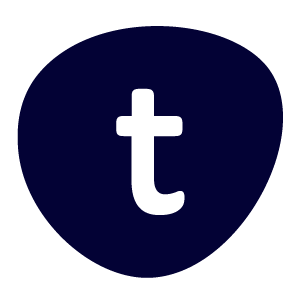
The completely redesigned logo, website and new brand elements align with significant expansion of Talentoday’s service and product offerings in 2021 and beyond, focused on supporting Corporate HR and Hiring Managers, Higher Education, HR and Coaching Firms and HR Tech Companies.
“The growth of our organization over the last few years has been invigorating, and the new look of our website and brand is designed to reflect and build upon the passion and energy that brought us here,” said Jordan McGuire, Managing Director at Talentoday. “Today, our people intelligence database includes 4+ million profiles from individuals in more than 160 countries. Despite the broad and expanding reach of our tools and technology, we are a company that measures success in people — the careers we support, the teams we build and the businesses we advise.”
Experience the new look of Talentoday and access our latest people analytics products and solutions at www.Talentoday.com.




